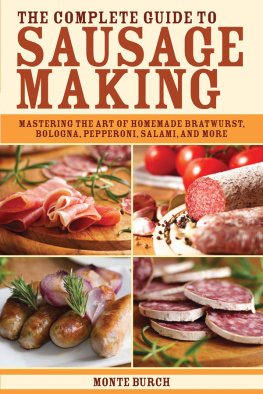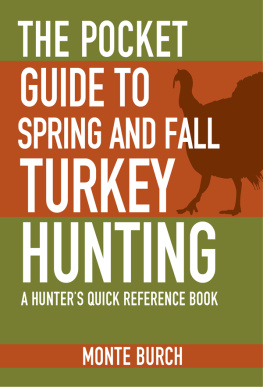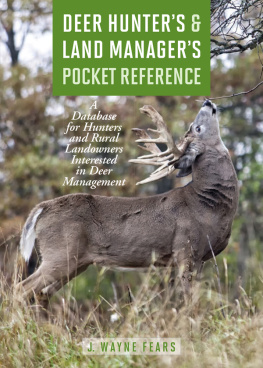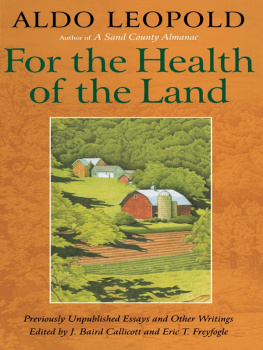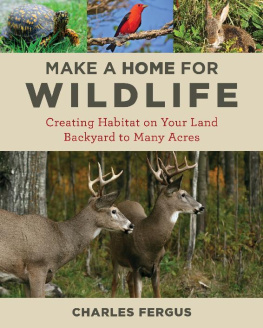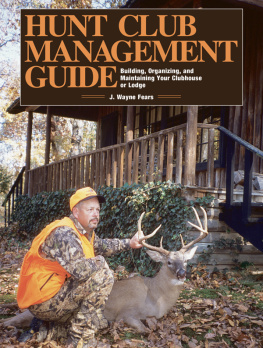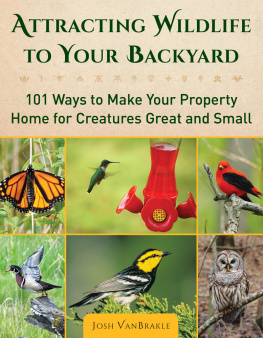WILDLIFE
& WOODLOT
MANAGEMENT

WILDLIFE
& WOODLOT
MANAGEMENT
A COMPREHENSIVE H ANDBOOK FOR F OOD P LOT
AND H ABITAT D EVELOPMENT
Monte Burch

Skyhorse Publishing
Dedication
To two close friends from the Missouri Department of Conservation. David Pitts got me interested and started in wildlife management back in the 70s when he was a Landowner Specialist with the MDC. The late Carl Conway also worked with landowners in wildlife management and was instrumental in helping me with various programs. Carl was also a very good friend and college fraternity brother.
Copyright 2013 by Skyhorse Publishing
All Rights Reserved. No part of this book may be reproduced in any manner without the express written consent of the publisher, except in the case of brief excerpts in critical reviews or articles. All inquiries should be addressed to Skyhorse Publishing, 307 West 36th Street, 11th Floor, New York, NY 10018.
Skyhorse Publishing books may be purchased in bulk at special discounts for sales promotion, corporate gifts, fund-raising, or educational purposes. Special editions can also be created to specifications. For details, contact the Special Sales Department, Skyhorse Publishing, 307 West 36th Street, 11th Floor, New York, NY 10018 or info@skyhorsepublishing.com.
Skyhorse and Skyhorse Publishing are registered trademarks of Skyhorse Publishing, Inc., a Delaware corporation.
Visit our website at www.skyhorsepublishing.com.
10 9 8 7 6 5 4 3 2 1
Library of Congress Cataloging-in-Publication Data is available on file.
ISBN: 978-1-62087-786-9
Printed in the United States of America
T ABLE OF C ONTENTS
I NTRODUCTION
More and more people are interested in attracting wildlife to their propertyfrom those with tiny backyard patios to those who own vast tracts of land. Many people manage their land for hunting and fishing; others manage simply to attract wildlife to watch and enjoy. Wildlife management can be simple and economical or take lots of hard work and money, depending on the owners goals, the land type, the existing habitat, and the species the landowner wishes to attract.
I grew up on a farm with lots of wildlife, although back in the 60s there were no white-tailed deer or turkeys in our area. Thanks to farsighted wildlife management plans, those two very popular species have been reintroduced to much of the United States and have flourished.
In the early 70s my wife, Joan, and I purchased a run-down hill farm in the Ozarks. Abandoned for several years, the land was worn out. There was little grass, the timberlands had been grazed to bare earth, and there were few game birds and animals. We learned that the Missouri Department of Conservation offers help to landowners wanting to create wildlife habitat, and we met David Pitts. At the time, Dave was a field service agent for the Department, and his job was to help landowners manage wildlife habitat. Over the years, Daves sage advice and friendship have been invaluable. We also received advice from local county extension agents, Soil Conservation Service personnel, and many others. At that time very few private individuals were managing habitat specifically for wildlife, and our neighbors thought we were a little crazy to put so much time and effort into something with no monetary reward.
We began planting food plots and improving and extensively managing pastures, haylands, and croplands. We also made widespread timber stand improvements, planted trees and shrubs to feed a variety of wildlife, seeded fields with warm-season grasses, fenced creeks, and constructed ponds. Many of these practices made our farm not only more profitable, but also much more attractive to wildlife. Over the years I have made numerous notes and collected information and ideas from anyone I could talk to about wildlife habitat management. When companies such as the Whitetail Institute began producing wildlife-specific seeds and plants, I volunteered as a test planter. Since then Ive tested numerous seeds and continue to test them. When ATVs became popular habitat-management tools, I experimented with the accessories available for them. They can be used for such diverse tasks as planting food plots, mowing, pond dams, and setting deer stands.
These days our farm is a wildlife haven. From our office windows we see wild animals every day. Often work is forgotten for a few moments when we spot a really big deer, a gobbler strutting, wood ducks landing on a pond, or an unusual bird at one of our feeders. We also have an abundance of just about every wild critter native to our area including rabbits, squirrels, quail, doves, and lots of non-game wildlife. Wood ducks and Canada geese nest on our property, and other migrating waterfowl use our seven ponds. These ponds provide lots of fishing, frogging, and family fun time. Ill never forget the amazement of our grandchildren one spring evening when we took a Kawasaki Mule drive through our property and they heard a pond full of spring peepers for the first time. How could such little things make such a big noise!
Wildlife habitat management is fun and can add to the enjoyment of your property, not to mention creating great hunting and fishing opportunities. I hope you and your family enjoy wildlife habitat management on your own property as much as we have.
THE LAND
CHAPTER 1
C HOOSING L AND
B efore you can manage habitat for wildlife, you need to lease or own land. If you lease, be sure to get a long-term lease, because many wildlife habitat practices take a long time to show results. The dream of most people who enjoy hunting, fishing, or simply watching wildlife is to own property, but the old adage They arent making any more land is even more applicable these days than when it was first said. With more land being gobbled up by urban sprawl, highways, and even big agriculture, less is available for wildlife. And not only is land for wildlife becoming more scarce, its also becoming more costly. For instance, not too many years ago rough hilly and unimproved Ozark land went for $500 an acre. At the time of this writing, that same land goes for well over $1,000 an acre and the price is climbing! It seems that everyone wants a wildlife haven or their own acre in Proper habitat management is the key to hunters, anglers, and landowners desiring to attract and keep wildlife for hunting, the country.

Proper habitat management is the key to hunters, anglers, and landowners desiring to attract and keep wildlife for hunting, fishing, or just watching.
P LANNING
If you dream of owning your own wildlife haven, first you must set goals and make a plan. How much can you afford? Will you live on the land? How much does land cost in your desired location? How much will insurance and taxes cost?
Then decide what type of wildlife youre interested in. In some cases you may be limited by existing habitat or topography, but often the habitat and management for one species may also be suitable for others. For example, managing a forest with openings for deer also benefits turkeys, quail, and numerous songbirds as well as small game such as squirrels and rabbits. And a pond or lake created and managed for fishing can also attract waterfowl and other wildlife.





